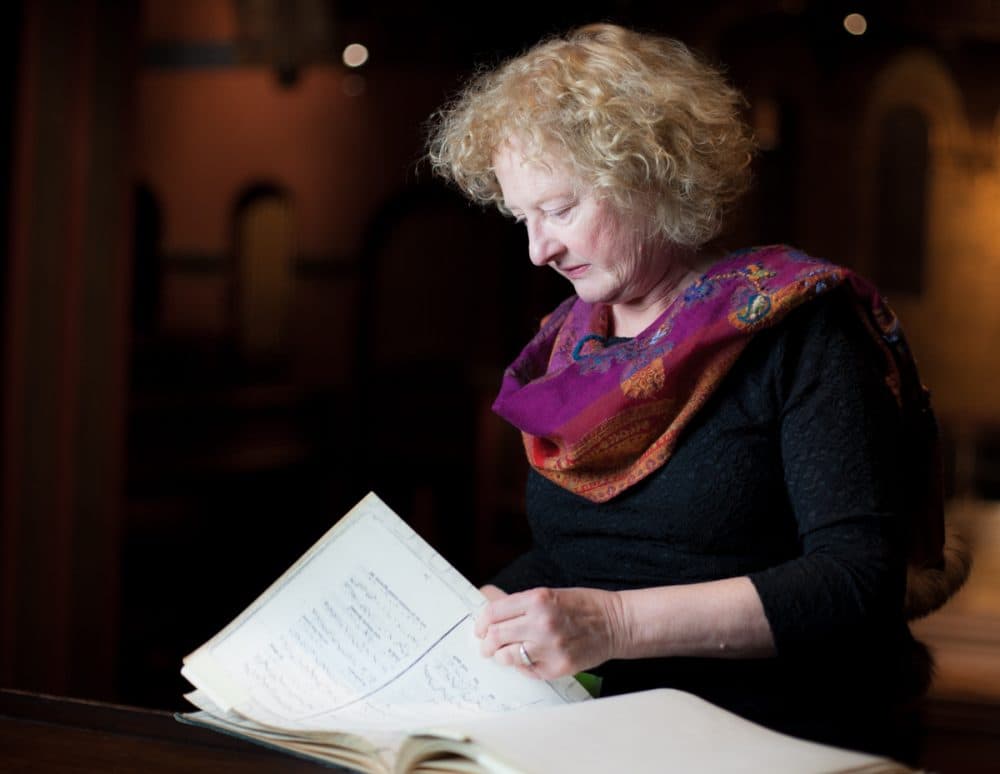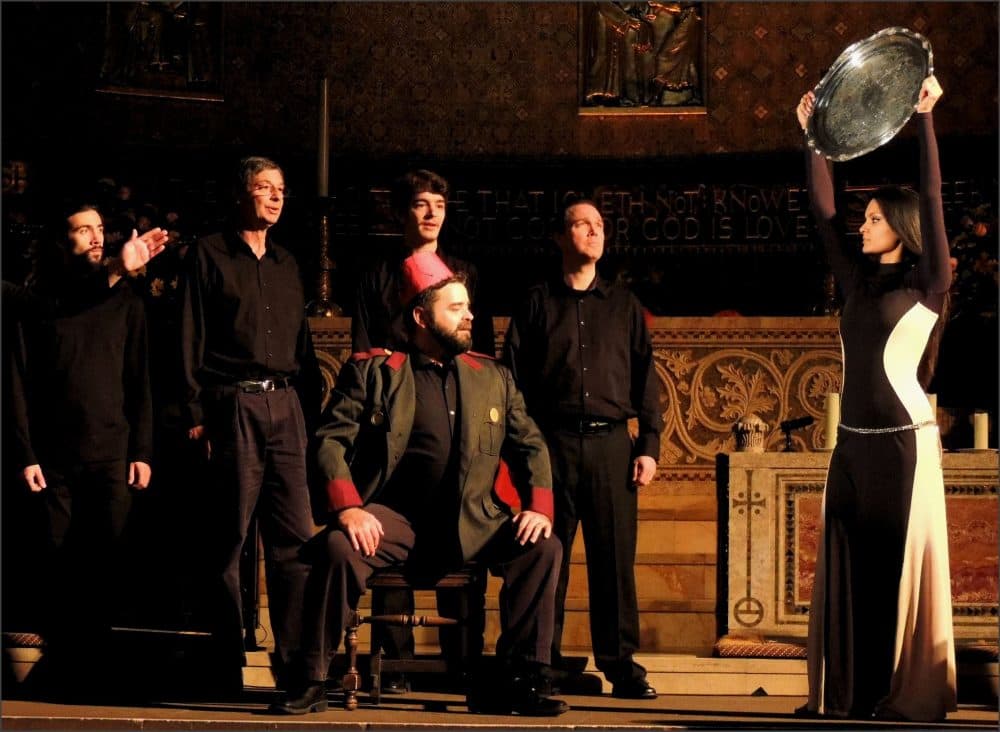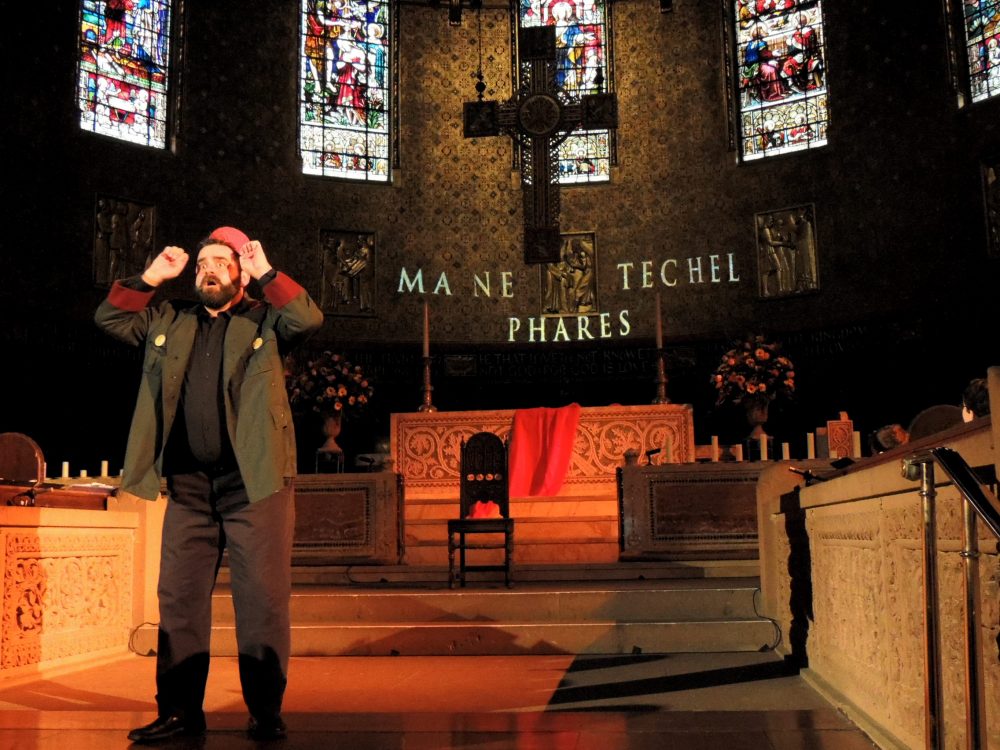Advertisement
To Speak Truth To Power: Why Boston Camerata Is Staging An 800-Year-Old Musical Theater Piece

Feel like your world has been turned upside down? There’s music for that.
It’s a long way from the current topsy-turvy politics, to 12th-century clerics reminding the church establishment about the abuse of authority, but the intent remains the same: Speak truth to power.
The Boston Camerata, under the direction of Anne Azéma, has never been shy about its political views, and its upcoming presentation of the "Play of Daniel" at Boston’s Trinity Church offers an artistic and elegant way of continuing that practice.
The "Play of Daniel," an 800-year-old piece of musical theater, not only fits snugly into medieval performance history, but into modern musical history as well. Its revival in the 1950s by Noah Greenberg and his New York Pro Musica is generally considered the beginning of the historical performance movement in America.
The "Play of Daniel" has subsequently had many re-stagings, including two by the Camerata — a 1985 version directed by the group’s founder, Joel Cohen, and this staging, first presented in 2014 under the direction of Azéma, who succeeded Cohen as Camerata's artistic director a decade ago.
She went back to the manuscript, a beautiful document housed at the British Library, to re-think her own staging, which will be presented in Concord, New Hampshire, on Jan. 26, at Boston’s Trinity Church on Jan. 29, and will travel to St. Louis on Jan. 31.
Azéma herself narrates, and soloists include Jordan Weatherston Pitts (Daniel), Joel Frederiksen (Darius), Camila Parias (Queen) and Jason McStoots (Belshazzar). Michael Barrett, Dan Hershey, Donald Wilkinson and others fill secondary roles. Instrumentalists include Shira Kammen (vielle, harp) and Karim Nagi (percussion). Indrany Datta-Barua dances, and the Trinity Choristers, Boston City Singers and students from Longy School of Music also participate.
The first performances of "Daniel" took place in Beauvais, France, in the 13th century, during the year-end revels. These revels allowed the lowest ranks of church-goers to flip roles with the highest ranking church officials — a back-row chorister might be bishop for a day — and take a turn preaching.
The story poetically follows the narrative of Daniel in the Babylonian court of Belshazzar. Mysterious writing appears on the walls of Belshazzar’s palace; Daniel is brought forth to interpret, and foretells the fall of Babylon.

The story resonates strongly for those without power, who tell truth fearlessly. "That comes right out of the page," Azéma says, "it’s not me superimposing anything. It’s not the first time in human history where the mighty have fallen, and it won’t be the last."
Although "Daniel" stands as one of the earliest musical theater works ever staged, and the Camerata knows a thing or two about historically informed performance (the group did celebrate its 60th anniversary in 2014), Azéma was not looking to immerse audiences in medieval history.
"It’s not useful to pretend to be doing something medieval," she says of her staging. "Pointy hats and curly shoes don’t cut it for me. We make enlightened choices about the music, and more importantly we face the fact that we are men and women in 2017."
Most of the notated music in "Daniel" is monophonic — a single melodic line, without harmony or chords. In fact, the entire manuscript offers very few instructions to the performers.
"The music is simple — nothing grand about it. We even have some pieces where the public can sing along with us. The manuscript has some mentions of what one should do theatrically: where Belshazzar makes his entrance, how his nobles sing, how the king is very moved — moved to tears — at one point. But there are so many ways to look at these sources.
"We are also including our own prelude and postlude to the play,” she says. Most of that music, and the ideas about characters and staging, come from the same Beauvais source as the play itself.

Azéma's visual approach mirrors her ideas about the score and staging.
"There are practically no costumes," she says. "There are symbolic touches. Gestures are minimal, and when they do happen they come from the bank of medieval gestures that you will be able to see on the windows around you."
She refers here to Trinity Church, whose stained glass by John La Farge will be on display, and whose acoustics Azéma says "made it an obvious choice."
"We visited a lot of places in Boston, many of which we had been to before, just to refresh our memory,” she says. “The sound here is ideal. Speech and song have a clarity all over the audience area.
"For me, this is an echo of an echo. This is Boston looking at medieval architecture, and creating its own medieval American place. It forced me artistically to look at the core of everything that 'Daniel' is about."
Watch this for a little more background on the performance:
The Boston Camerata performs the “Play of Daniel” on Jan. 26 in St. Paul’s School in Concord, New Hampshire, on Jan. 29 at Boston’s Trinity Church, and on Jan. 31 at the Cathedral Basilica in St. Louis, MO. For tickets ($25-$55) and information visit the website.
This article was originally published on January 24, 2017.

